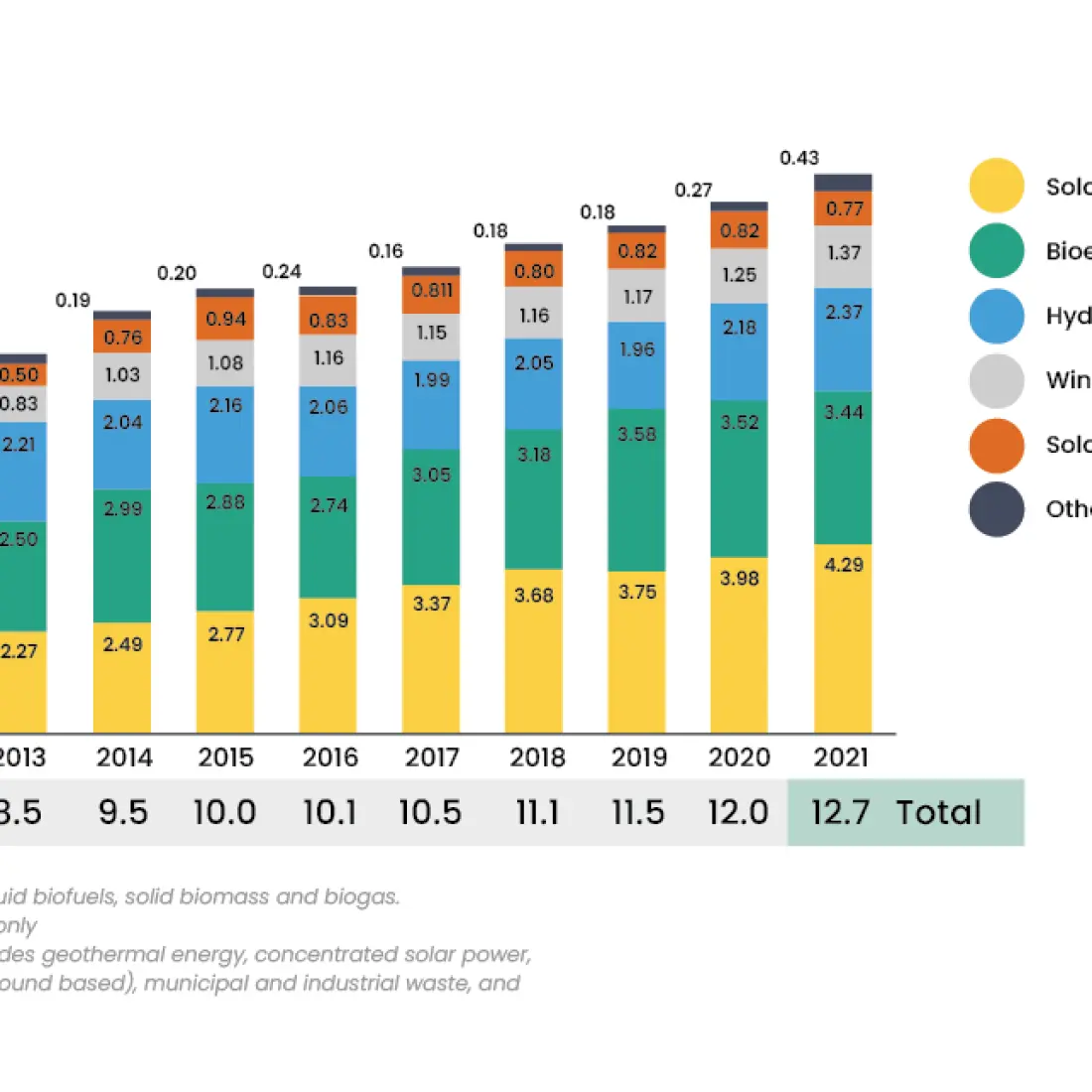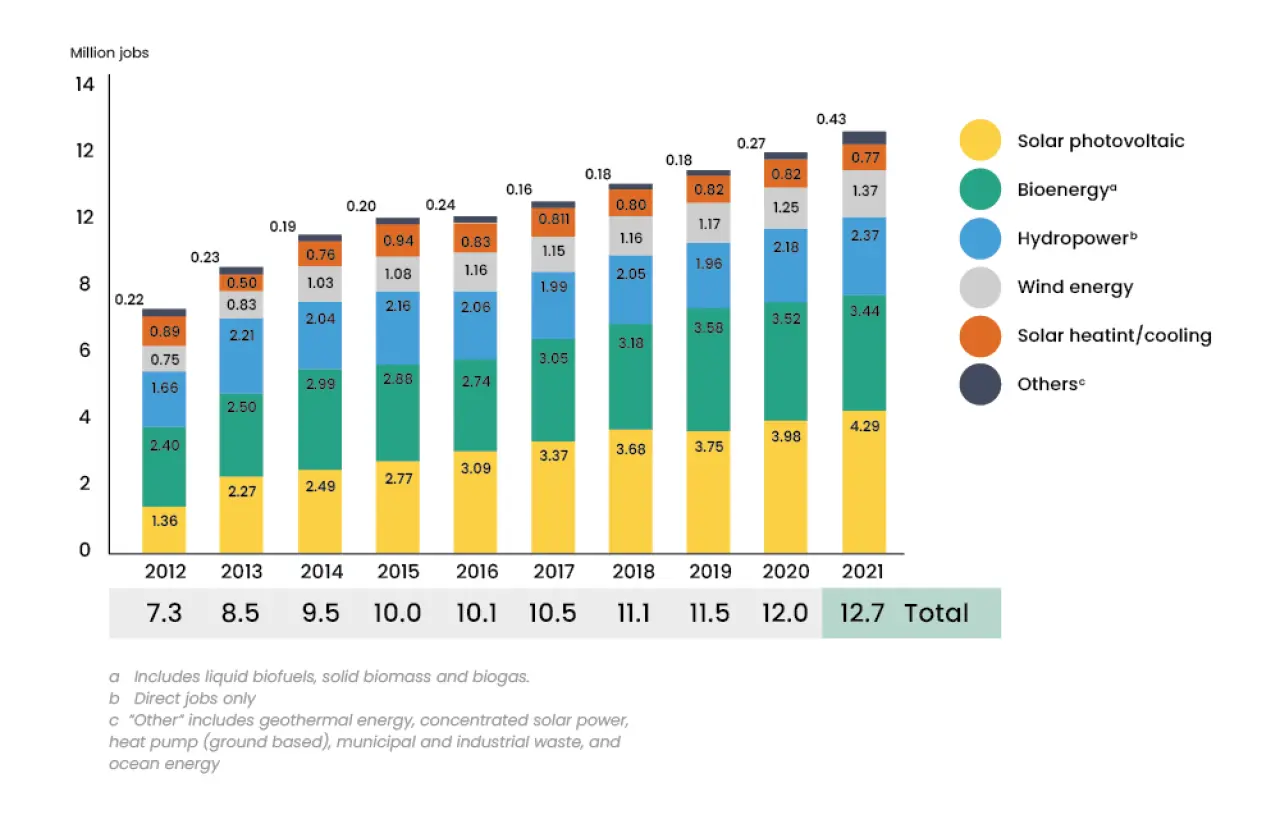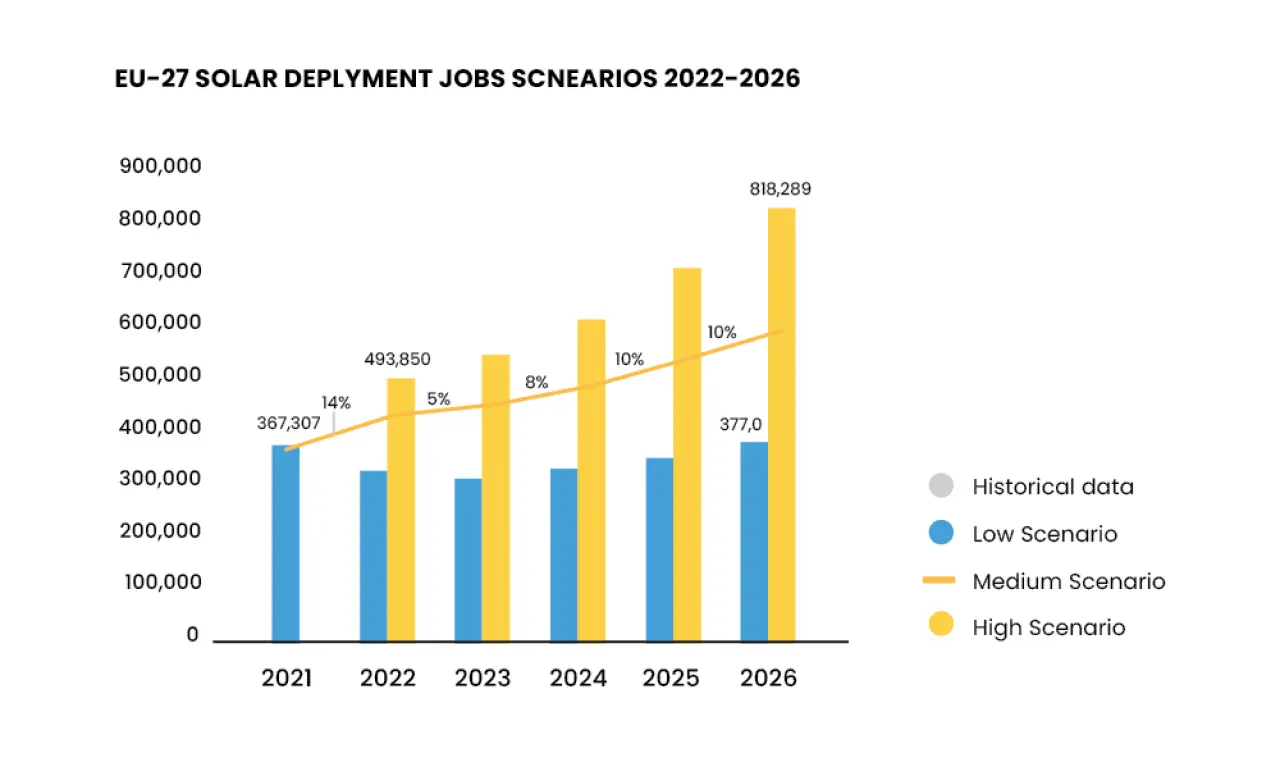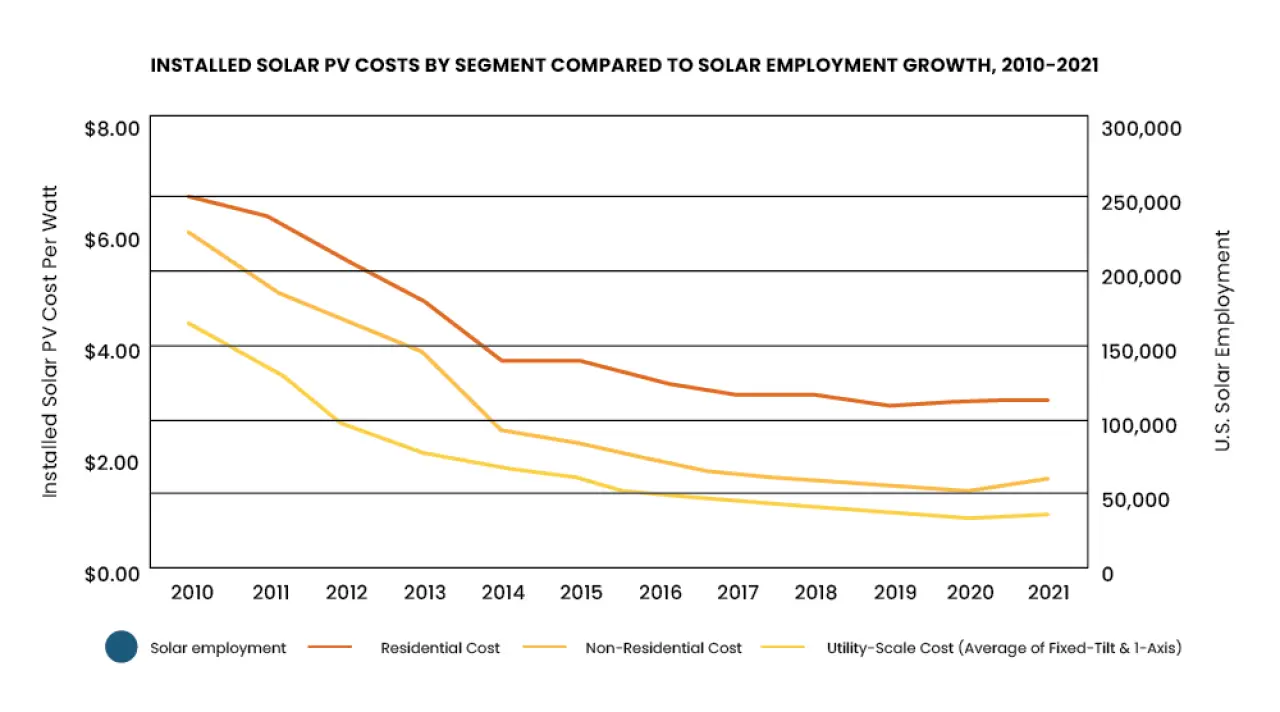Solar industry and the new employment possibilities


The solar industry is a booming sector paving the way for a brighter and more self-sustainable future. This growth is equally reflected in the job market. The number of people employed in the solar industry (as well as the renewable sector in general) is rising. The demand for skilled professionals and manual workers is on the rise too.
In total, the solar industry employs twice as many workers as the coal industry and is in third place amongst energy companies in terms of employment. This demand tends to increase as the industry grows rapidly.
Let’s look at the current situation in the solar employment sector and the 2021 numbers provided by SolarPower Europe, the International Renewable Energy Agency (IRENA), and the Interstate Renewable Energy Council (IREC).
Solar employment factors
Land, energy, capital, and labor factors largely determine locations of solar PV manufacturing supply chains, localization possibilities, and domestic job creation. However, government industrial policies are another significant aspect in creating effective supply chains. Here are other critical requirements for specific job markets in different parts of production:
- Polysilicon production relies on large-scale capital investments, low-cost electricity
and heat and skilled labor.
- Cell manufacturing requires engineers and skilled machine operators to run the processing equipment. Beneficial taxation policies, affordable land, and electricity are also important here.
- Module production does not require the same level of technical skills as cell fabrication because it focuses on assembly.
Solar employment in numbers
Global situation
In early Q1 of 2022, the world broke through 1TW of solar capacity. In 2021 solar energy also constituted around 50 percent of the global energy capacity built. 2021 also saw a rise to 12.7 million workplaces in renewables, which is 700,000 more than in 2020. The solar industry comprises one-third of it.

SolarPower EU forecast that 2TW levels to be reached before the end of 2024 will require many employees. However, the global shortage of solar workers is still identified as the major challenge in the solar industry. There is a lack of specialists in the solar transition across all the sectors of the solar plant building.
As per IRENA’s report, China is still the primary market that constitutes around 63 percent of solar industry jobs. It has a market monopoly with about96% of PV manufacturing in 2021. The second biggest job market is the US. However, it is two times smaller than China’s. Very close to the US is India — a rapidly rising solar market. A little behind and almost equal between each other are Japan, Bangladesh, and Brazil.
There are very few European countries among the top players. Poland and Germany are the only ones in the global top 10. However, their markets are three times smaller than Brazil’s.
Solar employment in the EU
Back in 2021, the predictions for 2022 claimed that Europe was supposed to have from 34 to 50 GW installed, which translated to 42% yearly growth. These predictions proved to be true because the demand for solar power installation is rapidly increasing due to skyrocketing prices of power and gas.

2021 has also seen rapid growth in employment in the solar industry. That year the solar sector employed 466,000 employees in the EU, which is 108,000 more than in 2020. The majority of these jobs are related to the installation phase. SolarPowerEurope’s forecast shows that the number of solar jobs should rise to 530,000 in 2022 under the medium scenario. The maximum scenario forecast is 606,000, while under the medium scenario, we’ll see 764,000 in 2026.
The dominating markets with the most solar jobs are Poland, Germany, Spain, and the Netherlands. They also host the majority of solar workplaces in the EU.
Solar employment in the US
As of December 2021, the solar industry supported 255,037 jobs at 29,019 locations in all 50 states, the District of Columbia, and Puerto Rico. This is a 9,2 percent increase if compared to 2020. In 2021 solar employment increased in 47 states, with California taking the lead.

Current challenges
While solar jobs are increasingly prominent, a few significant challenges have also emerged during the past few years.
Shortage of skilled workforce
The lack of a skilled workforce remains a significant issue in the EU. A skilled labor shortage might create a severe bottleneck that might prevent Europe from reaching its energy goals. To solve this issue, countries should implement beneficiary policies and training policies. The EU must also advance the Solar Skills Partnership programa one of its priorities. Relevant financial injections should also be implemented.
Lack of diversity
The solar industry is still a primarily male-dominated sector. In the US, women made up only 30 percent of employees in the solar sector in 2021. Moreover, just 31 percent of US companies reported policies and strategies to increase the number of female or LGBTQ+ hires or increase the diversity in terms of employees’ racial or ethnic backgrounds. However, the solar industry fares better regarding gender balance than other renewable sectors.
Lack of domestication of jobs
The several-country domination of production, engineering, and other services concentrates a considerable part of the job market in those countries. This fact decreases the level of possibilities for solar employment in the remaining part of the world.
However, due to the vulnerability of supply processes often spanning across different continents, there is an increasing need for localization and domestication of the market. This is especially important in the context of geopolitical tensions. So, amore local solar workforce will likely be needed in the future.
Established policy framework
The ongoing expansion of the renewables industry requires an established policy framework. It includes education, industry policies, skill trading, and diversity and inclusion strategies. Proper social protection policies and trade unions should also be established.
Conclusions
As we can see, all the numbers for 2021 show that the solar industry is on the rapid rise. The 2022 statistics should be no less impressive. So, the solar industry is an exciting and vibrant area to consider for your career.
PVcase also tries to make things easier for future engineers and project developers. Our Ground Mount, Roof Mount, and Yield tools are tailored to make solar engineering quicker, easier, and more efficient.